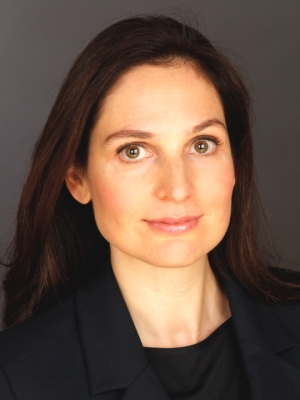Europe's largest research centrifuge
Europe's largest research centrifuge is currently being set up at D-BAUG. It will enable researchers to simulate geotechnical structures as well as the effects of natural hazards. On Wednesday, the centrifuge was installed by Professor Ioannis Anastasopoulos and his team.
The start of the installation process back in August was a spectacle in itself, with workers taking just under an hour to lift a 245 tonne circular concrete chamber by crane and place it in the ground of the inner courtyard of the HIF building from a height of 25 metres.
Last Wednesday, the key element of the new research facility at the ETH Institute for Geotechnical Engineering was put in place: the centrifuge, weighing about 20 tonnes, was lowered into the concrete chamber using a mobile crane. The challenge was to place the centrifuge precisely in the centre of the concrete chamber, ensure verticality of its axis. And this position had to be accurate to the millimetre.
The chamber is supported by special steel springs that will absorb vibrations from the centrifuge and prevent them from spreading underground through the campus. This facility will not only be the largest capacity geotechnical centrifuge in Europe, but also the first one worldwide to be vibration-isolated.
Modelling to enhance sustainability and resilience to natural hazards
The new centrifuge will be part of a research centre for centrifuge modelling at the ETH Department of Civil, Environmental and Geomatic Engineering, and will enable researchers to simulate earthquakes, ground movements (e.g., landslides), and water related hazards (e.g., flooding, tsunamis) to geotechnical structures. These simulations will be used to optimise the design of new and the retrofit of existing structures (such as bridges, buildings, and dams), reducing the potential risks posed by natural hazards to structures and infrastructure, while minimizing the use of natural resources and the associated carbon footprint.
The centrifuge itself has a simple structure, consisting essentially of a 9 metre long rotating arm with two swings attached, on which the soil-structure models are installed. By spinning, the centrifuge can develop a centrifugal acceleration of 250 times the gravitational acceleration (g), technically referred to as “250 g”.
The centrifuge has a capacity of 500 gtonnes, which means that it can carry up to 2 tonnes of specimen in an increased gravitational field of 250 g (2 tonnes multiplied by 250 g gives 500 gtonnes). The next step will be to equip the facility with an earthquake simulator, capable of simulating real earthquake motions.
The enhanced gravity field is indispensable in order to achieve realistic modelling of soil in the reduced scale laboratory environment. The behaviour of soil largely depends on stress level. Models that merely reduce the geometric scale of the real (prototype) problem (soil layer depth, dimensions of structure) cannot provide realistic results. By increasing the gravitational field, the centrifuge achieves correct stress scaling.
Thus, researchers will be able to use the centrifuge to realistically simulate the performance of large-scale structures and ground movements. To do this, they will place the models of the ground, including soil layers and the structure, on the swings and accelerate them to the desired centrifugal acceleration. For example, 30 cm of soil in the centrifuge accelerated at 100 g corresponds to a depth of 30 metres in reality. The earthquake simulator has a load capacity of up to 700 kg.
From Bochum to Zurich
The centrifuge itself is not completely new, but comes from Bochum, where it was no longer used. Bearings, motors, hydraulics, and electronics were all renewed and modernized. The work involved in fully setting up the centrifuge and connecting it to the necessary media is still ongoing; it should be ready for use by the end of the year – albeit initially at reduced power only. It is expected to be fully functional from late summer 2022, once the electricity supply is fully installed and the second phase of the current construction work on the HIF teaching and research building is complete.
The centrifuge is being installed as part of the renovation and extension of the HIF building, which was built in 1976 and houses the Department of Civil, Environmental and Geomatic Engineering (D-BAUG). The first stage, which involves the new extension wing with additional laboratories, should be ready by the end of June 2021. This part of the building will bring together all nine professorships of environmental engineering for the first time. In addition, new meeting areas will also be set up to promote scientific exchange. The overall HIF renovation and extension process will run until the completion of the third stage in 2023.
